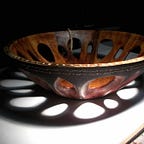At 7000 feet, más o menos
Breathtaking!
Literally!
Finally my order of canned oxygen arrived yesterday! Also some liquid that
one puts a drop of into a glass of water. I tried it this morning (the drops) and it did seem to give me a boost, or maybe it was just my imagination,
The altitude in which I have lived for the past six or seven weeks has been a challenge for my lowland physical self. It’s exciting to “feel heady”, but there are limits to headiness. One’s body longs for more steady purchase on the solid ground.
How do Sherpas maintain their famous energy to do the heavy lifting while accompanying lowlandish hikers through the heights of Kilimanjaro or Everest?
I suppose being born in the heights is an advantage if that is where one is going to work. Do Sherpas suffer when they go to sea level places?
How have I felt while adjusting to altitudes in NE New Mexico? Let me count the ways: fatigue, headache, big dark reddish circles under my eyes, shortness of breath, tiredness with a bit of depression, vertigo, dizziness, to name a few.
People here nod knowingly when I mention this. Yesterday someone assured me that after my coming trip to the Seattle area I will find it less arduous to return to the dry places. I’ll be back in my Puget Sound area home turf for three weeks or so, and then return to this high desert place, having done some adjusting this first time. I am hoping I will adjust more easily.
How do birds handle arid air? How do gophers live to dig desert holes with so little water?
Rock and sand and sun and pinon and juniper (invasive) and dryness, and enormous panoramic views of distances one cannot measure by sight! The air so clear. The air so dry and nearly always breezy it tries to draw moisture from your own face. For the first week my eyes kept closing…my mind drifting off.
I hydrated and hydrated. Lip balm and coconut oil! Come to this place prepared with hydrating and protective oils! Be sure to allow at least a week to adjust unless you happen to be from Sherpa-like country.
Why, I wondered, would Georgia O’Keeffe be drawn to such vast and arid expanses?
Georgia O’Keeffe found color here in the ecru and sienna stretches. She found shapes and forms here.
For cowboys, it’s the dust and the task at hand. The solitary FACT of distance and void. The relief from cold or heat. The taste of three-day-old stew and the fleeting relief of a sleeping bag on the plain for a few hours before sun-up.
For artists, it’s raw pigments, wanting water. And lavish bold land forms that somehow explain to us the anatomy of ourselves if we look long enough.
One has to stop here for a while to think it’s more than just a curiosity.
Watch a herd of cows whose life is these slopes and plains. They know the
irrigation ditch, and what time to go there. It’s life and air and elements to them and they have learned how and where and when to consume what life requires. Or, if not, they are the landscape, the subject of artists’ still-lifes, and tourist’s souvenirs, or else just ordinary waste of the cattle business. And their dehydrated meat the sustenance of predatory animals and birds. Their bones ground into the sand colored soil their kin will walk on, perhaps.
These free range cattle apparently don’t have dread. Their days are sufficient unto themselves. Then one day they are no more.
A human learns these things about cattle in the dry desert. Makes one think.
SGHolland ©Feb 28 2019
